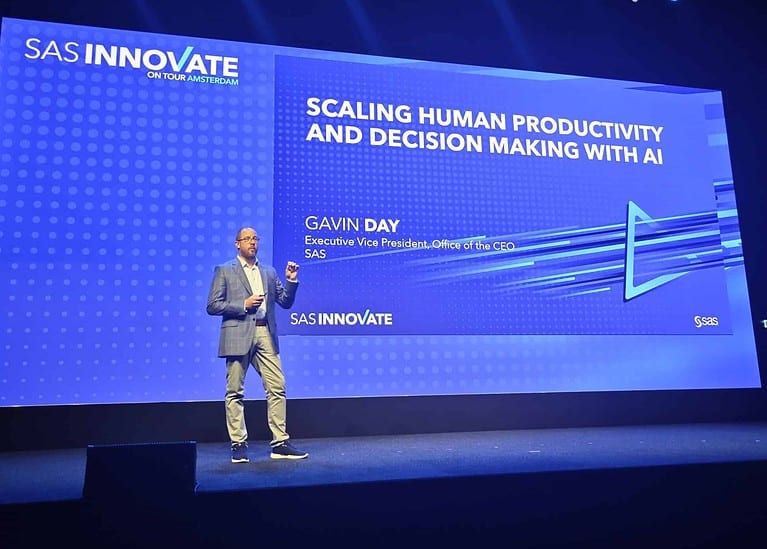There is a lot of technology within the SAS platform to address the AI and analytics lifecycle. But where exactly is the focus for further development of the platform? We spoke to Gavin Day during the recent SAS Innovate on Tour event in Amsterdam about the direction and focal points.
Day is Executive Vice President, Office of the CEO, at SAS and has previously held several executive-tech positions. He is involved in bringing together the entire portfolio around Viya 4, SAS’ latest cloud-native analytics platform. The software should be able to run anywhere a company wants: the public cloud, private cloud, hybrid cloud, on-premise and on the edge. In other words, companies are adopting the same operating model for all SAS technologies.
What Day sees is that organizations now need three critical principles when it comes to the AI and analytics lifecycle: performance, productivity and trust. The platform is further developed around those qualities.
Is the cloud really cheaper?
Day immediately cites the performance category at the beginning of our conversation. By this, SAS is referring to the benefits that AI and analytics can offer in the cloud. Many companies make a clear choice to do so because of flexibility, robustness and cost. There is no question, according to Day, that agility and resilience are realized through a cloud approach. But whether one realizes the cost savings the industry talked about a few years ago is highly questionable.
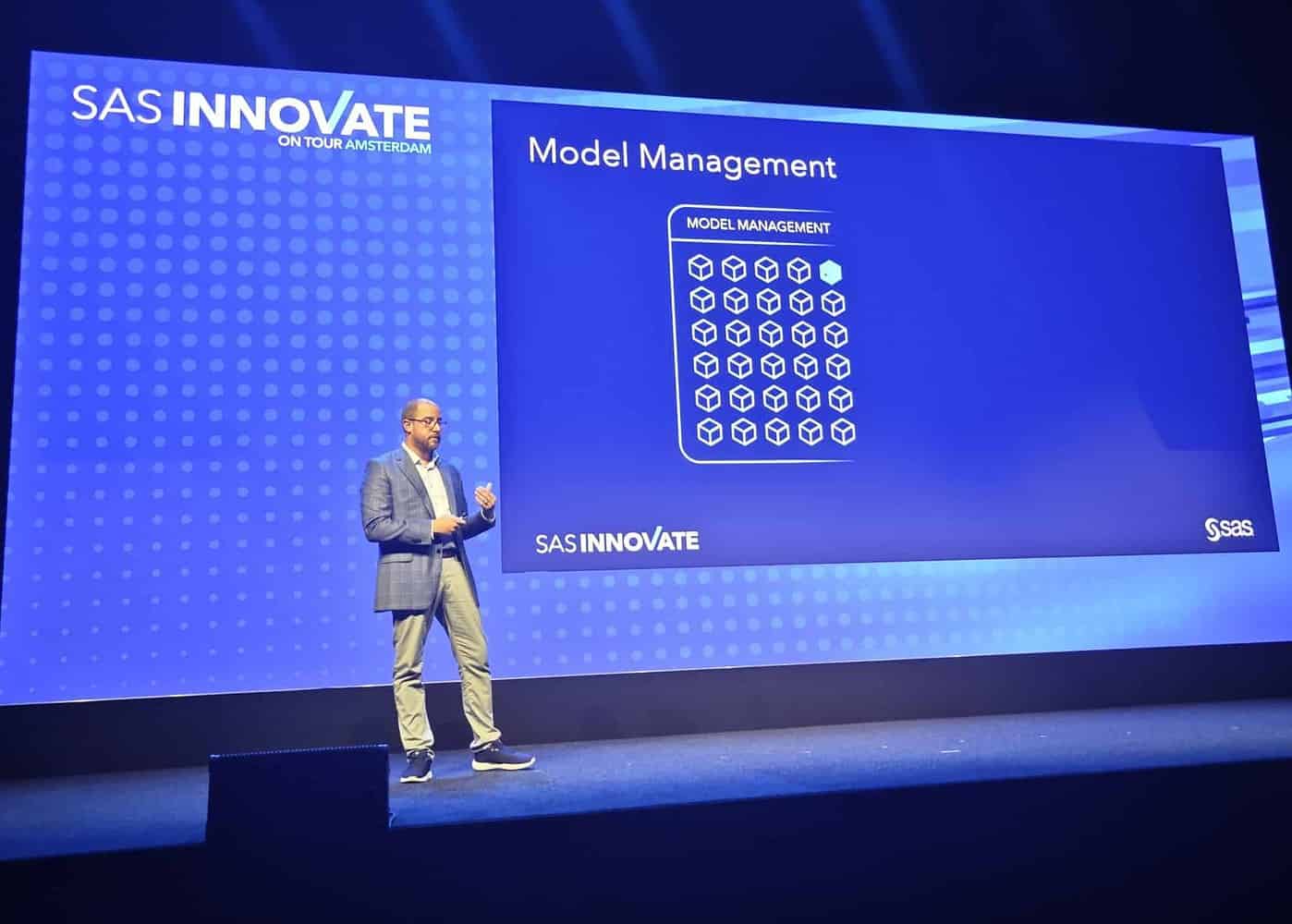
SAS gets a lot of feedback from the market on that cost issue, Day explains. The companies he talks to often react with surprise to their cloud usage bills. In doing so, the variable consumption model makes it difficult to estimate costs.
Pulling this toward SAS’ software, the consumption model can create just as much ambiguity. This is partly due to the use of compute resources. Companies using SAS Viya train models in the cloud. Training models can sometimes take days depending on complexity. Companies see this time reflected in their cloud bills. SAS has put a lot of development work into speeding up the training process precisely to address that. Consequently, according to Day, Viya is now faster than many competing platforms, citing recent research.
Address storage as well
In addition to compute, storage also accounts for a large part of the costs in cloud computing. Companies often have very large databases for analytics, which must also move with them to the cloud. However, the data storage must meet modern requirements around scalability, security and fast execution of queries.
To support this, SAS has partnered with SingleStore. This distributed SQL database features an engine to support operational and transactional workloads. Day indicates that integration with this technology is one of the best options for running SAS Viya. He says this combination leads to a storage cost reduction of 60 percent to 80 percent, thanks to the data compression method.
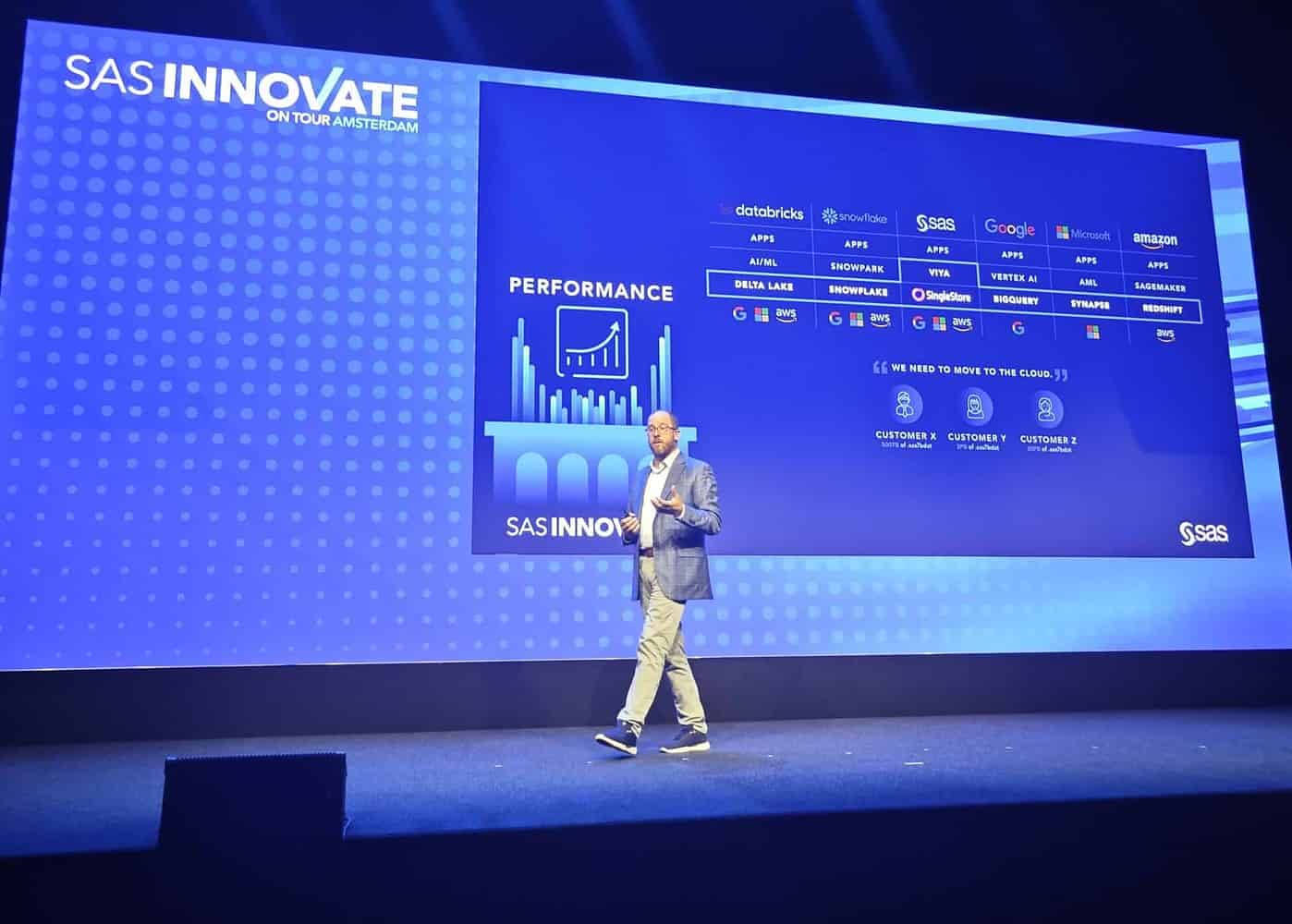
In addition to SingleStore, companies also use other cloud databases. For these, SAS also wants to further expand existing integrations. For example, a further integration with Snowflake was recently announced, allowing SAS Viya to run better on the Snowflake infrastructure. Other vendors such as Microsoft Azure, AWS and Google Cloud also remain on SAS’ radar.
New productivity standards
Everything we’ve covered so far falls under the category of performance. However, Day points out that productivity is also an essential element in AI and analytics. Initially, he mainly points out the limitations people used to face in this area. A few years ago, for example, it could take weeks for a data engineer to access data, partly because of a full schedule and the complexity of the process. What also occurred was that an organization had built its own data integration framework. If the responsible data expert then leaves the organization, all knowledge and thus the ability to work with the framework is lost. These are all factors that hinder productivity and ideally need to be addressed.
SAS Viya should therefore be a foundation for getting as many and as quickly as possible models into production to support data-based decision making. Provided, of course, that the model is actually suitable to be put into production. So the platform has components for data pipelining, model development, model management, model deployment and model performance. SAS also refers to automating all those things as much as possible as taking computer science out of data science.
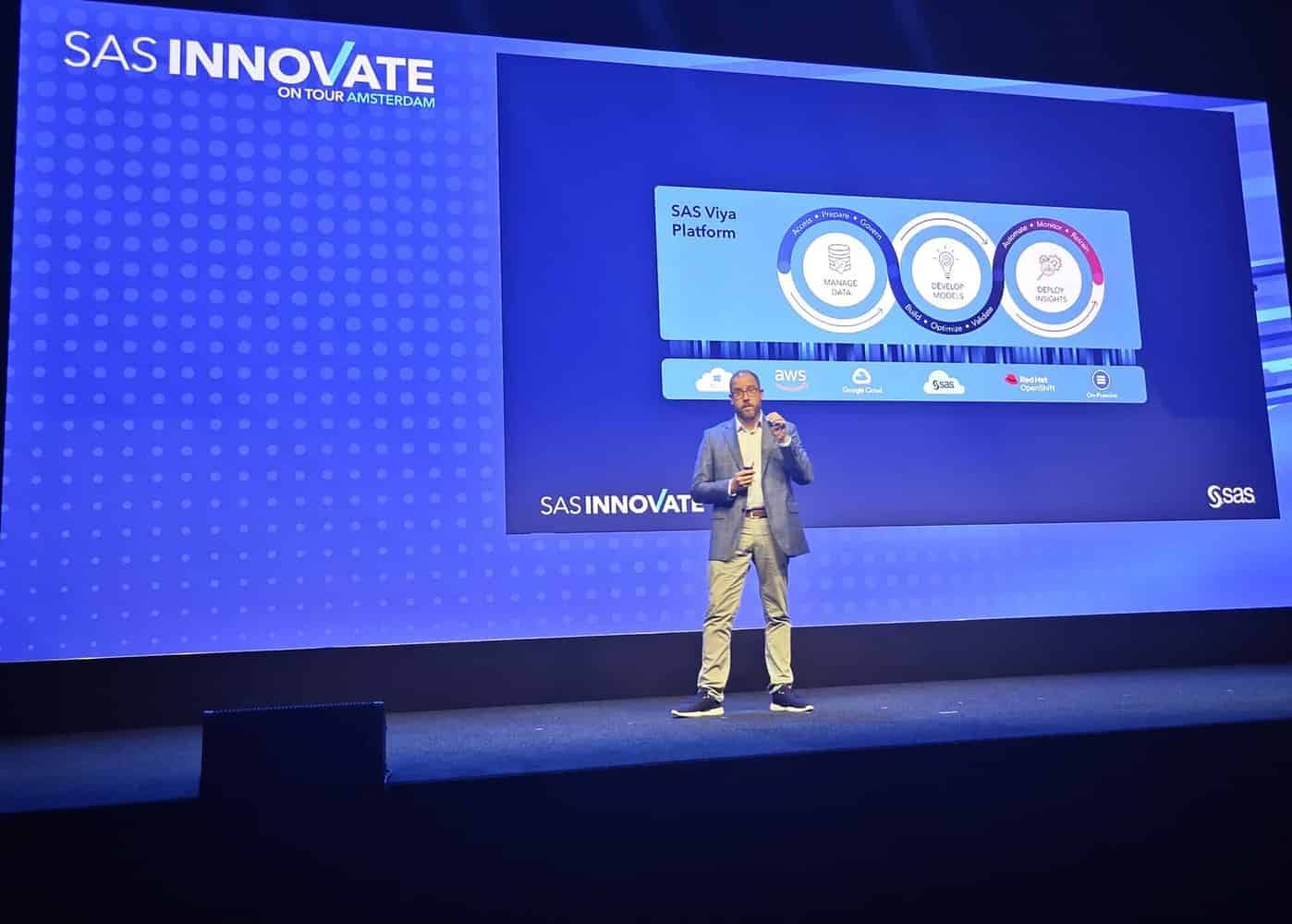
In our conversation, Day intersects that it is crucial to support employees’ skills for this as much as possible. In the past, SAS was a platform that often only trained SAS experts could use, for example, because there was only support for the SAS programming language. This has now changed with support for Python and R. And as far as Day is concerned, eyes remain open for any additional languages.
According to Day, there are also productivity gains to be made if we as humans can better handle data. Or data literacy, where you as an individual are able to handle and understand data. You can achieve this by making technology simpler, but also by training people. Day indicates that for SAS, both are important, referring in part to SAS’ global initiatives in which it partners with educational institutions. Young students are thus introduced to data science early in life.
Eliminate fear
Finally, there is the trust category, something that is increasingly in demand. Although AI and analytics have been around for more than 50 years, today, because of recent developments around for example ChatGPT, society particularly sees it as something new. At the same time, when a new technology emerges, people often begin to worry about risk. “We need to make sure that decisions made from SAS on behalf of people are explainable, transparent and fair. SAS calls this responsible innovation,” Day said. “If historical data is biased or underrepresented, AI-generated decisions will potentially be biased and have unintended consequences.”
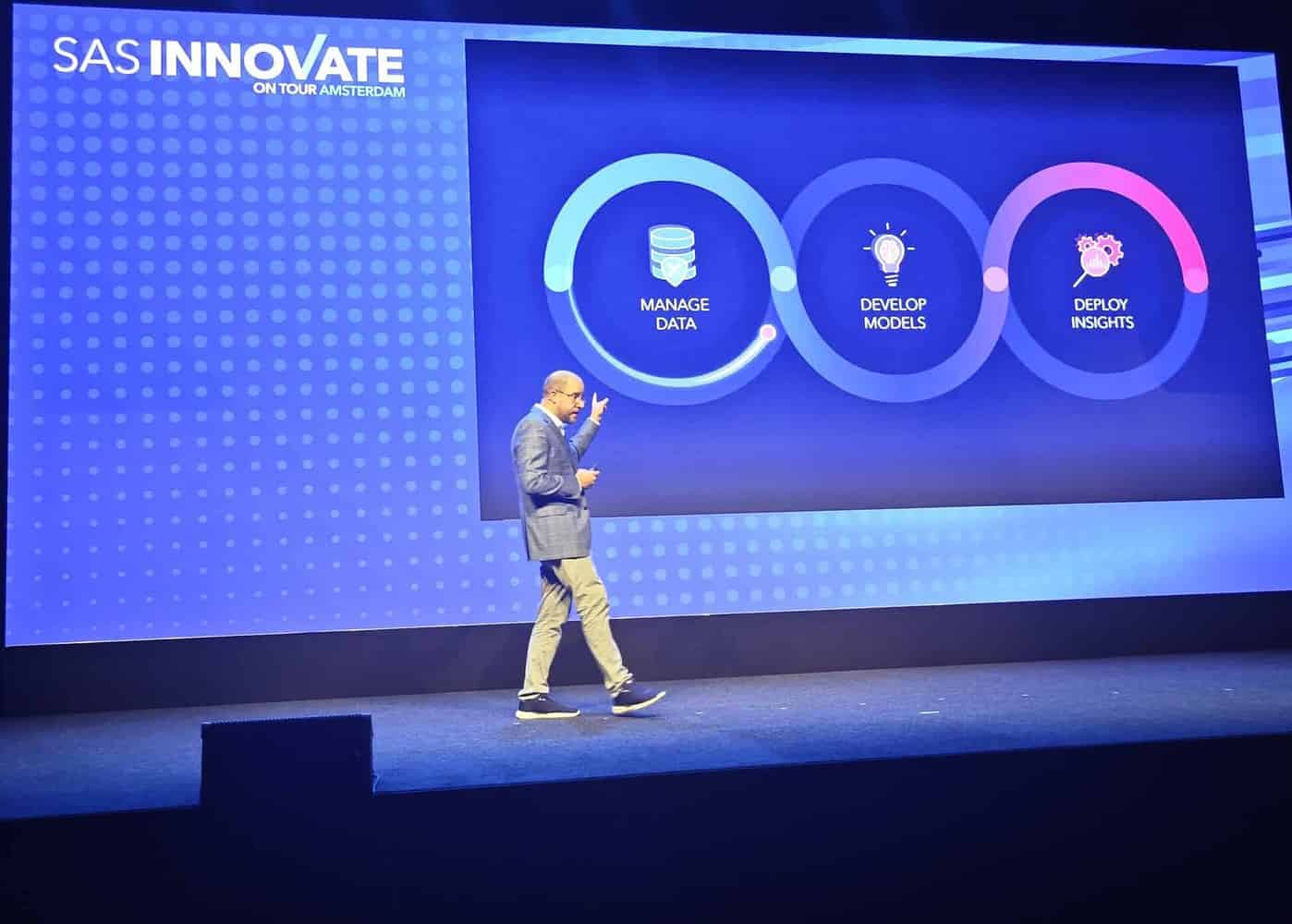
He points out that with Viya, there has been considerable investment in building a platform that supports trustworthy AI. As an example, Day cites Model Cards, a feature that creates a map to explain a model with the click of a button. In this way, the data scientist is minimally burdened with the responsible innovation effort, but there is an option for users and the business to gain trust in AI.
In the end, SAS found all kinds of ways to address trust. Because of the importance of the topic, during SAS Innovate on Tour we also sat down with Reggie Townsend, Vice President of the SAS Data Ethics Practice. We will therefore discuss trust further in a future article. Keep a close eye on Techzine.
